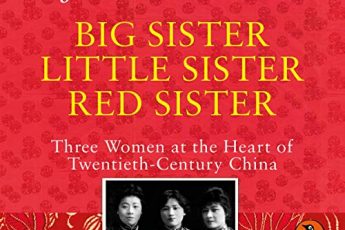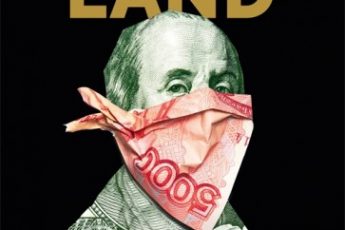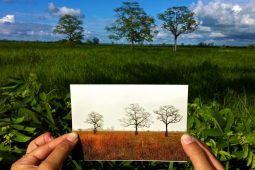
A Savaged Dreamland. Journeys in Burma.
Author: David Eimer
Bloomsbury (2019)
Howl dines on David Eimer’s superb new account of modern day Burma, a land where the past is never that far away.
Appertiser
Five years ago, in a leafy café in the heart of Phnom Penh, I sat down with David Eimer whose new book, A Savaged Dreamland: Journeys in Burma, was published in August. Back then, however, our conversation centred on another book, also by Eimer, The Emperor Far Away: Travels at the Edge of China, which I was reviewing for a city paper.
Eimer was newly arrived in Phnom Penh, having escaped from Bangkok for a planned new beginning in the kingdom’s fair capital (it did not work out, Eimer moved on a few months after our interview).
The Emperor Far Away was an excellent piece of travelling reportage and I enjoyed the opportunity to sit down and to talk to the man who had ‘fathered’ the tome. Time quickly passed and with the second latte kicking in David announced the need to leave for another appointment. There was, though, time for one last question as he made his way towards his bicycle.
“So what are you working on next?”
“Something on Burma . . .’ David replied, “it’s more in my head than on paper, but it’s coming together.”
And then he was gone, pedalling off into the monsoon sun of a lazy Phnom Penh afternoon.
But now Mr. Eimer has returned and that ‘Burma book’, referred to several monsoons ago, has passed through its gestation and now seats prominently on the hollow shelves of the globe’s bookshops.
Main Course
‘Fractured land’: it is an oft-used term but in many ways it seems the best phrase to describe contemporary Burma. This was not how things appeared four short years ago, in 2015, when the National League for Democracy (NLD) swept to power, voters inspired by the promise of its Noble prize winning leader Aung San Suu Kyi’s (or Daw Suu as she is know to most Burmese). In the aftermath of the election the number of international tourists arriving in Burma, previously in the low thousands, swelled to 3+ million, with Yangon, Bagan and Mandalay on the ‘hot list’ of places to visit. The end to isolation also saw foreign companies navigating to Burma’s shores, drawn by an inexpensive labour force, copious natural resources and the knowledge that they would no longer be called to account for trading with a pariah state.
Four years on and this flush of optimism has given way to disappointment. Tourists numbers have declined markedly since the halcyon days of the mid-decade, while Daw Suu’s hero status has been tarnished by her seeming indifference to the persecution of the country’s Rohingya Muslim minority and the detention of local journalists. Behind the scenes, meanwhile, the nation’s generals remain clearly in charge, their control on the strings of power as tight as ever.
It is this Burma, the country that rose and then fell from grace, that Savage Dreamland documents. And in Eimer it has found the perfect chronicler. Former foreign correspondent with the Daily Telegraph (China desk) and for the South China Morning Post (Southeast Asia) Eimer clearly has the reporting chops to bring the story of modern Burma into the light.
To accomplish this task Eimer takes us on a ‘journey’, one that draws on history, culture and the post-WWII politics of Burma, mingled with interviews, conservations and ‘vignettes of observation’ draw from those who he meets and the places he visits through his travels. The resulting view of Burma is a thousand miles away from the post-card image of saffron clad monks and twilight-lit temples. Instead the nation emerges as a disjointed country; a land at war, where minorities, nominal leaders and generals battle with the notions of what the future should be, bracketed by the aspirations of powerful neighbours, with the whole menagerie periodically stirred by forces originating from imperial wrongs.
Eimer also has an eye for detail and when he shares some of these with the reader his dispassionate reporter persona falls away—an account of watching Yangon natives using ropes and hitches to hoist food items to their top-floor balconies is one such example. Although quickly—too quickly perhaps—Eimer returns to the role of ‘objective observer’, his emotions and feelings placed on hold. The impression left is of a man meandering through a museum, telling us what he sees but revealing little of what it means to him.
It is also a challenge, sometimes, to follow Eimer’s physical path across Burma. In part this is because the ‘journeys’ that feature in the book unfolded across several years of travel and reporting. But still, as a reader you long for some unity of theme or idea around which his movements can coalesce, rather than the patchwork feel that arises across the chapters of A Savage Dreamland.
Dessert
But none of this takes away from what is a compelling, informed and superbly written account of modern Burma. The result: A Savage Wonderland is—for now at least—the ‘go to’ book for those wishing to understand this most complex and divided of nations.
After Dinner Mints
Some factoids from A Savage Wonderland
- A third of Burma’s 55 million people belong to 30 or more ethnicities, the greater number in open conflict with the Burma’s national army (the Tatmadew).
- These conflicts represent the longest running civil wars in modern history.
- In the 1950s Burma was home to a flourishing movie industry that reached as far as California, with the Burmese actress Win Win Than starring alongside Gregory Peck in the Hollywood production of The Purple Plain.
David Eimer’s A Savage Wonderland is available at all Monument Book stores.









